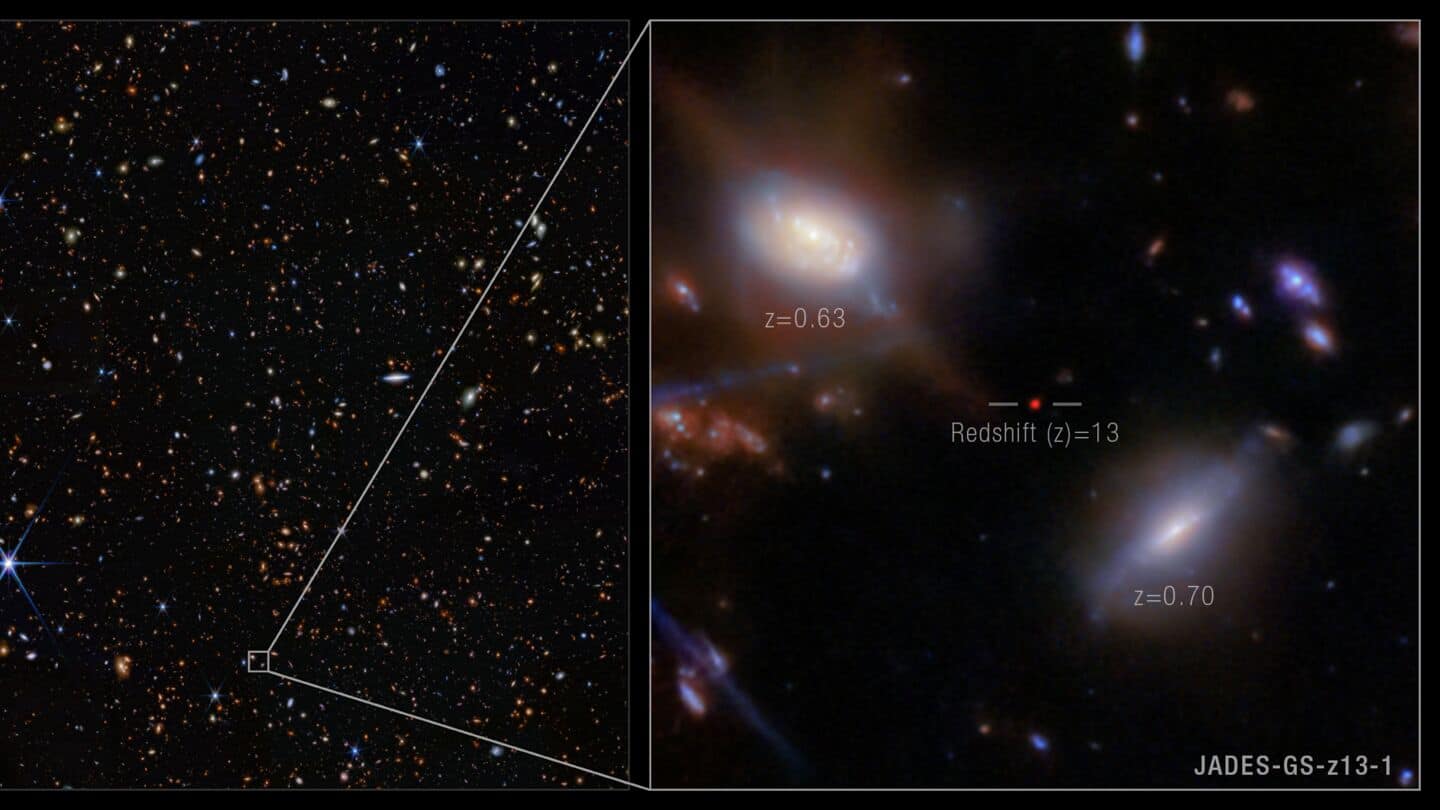
Watch: This galaxy existed when the universe was an infant
What's the story
In a groundbreaking discovery, a team of international astronomers has detected light from an extremely distant galaxy, JADES-GS-z13-1, using NASA's James Webb Space Telescope (JWST).
The galaxy is believed to have existed just 330 million years after the Big Bang.
With a redshift (z) of 13, JADES-GS-z13-1 is among the earliest galaxies observed, making it a significant find in early universe studies.
Cosmic journey
JADES-GS-z13-1 : A beacon from the cosmic dark ages
The light from galaxy JADES-GS-z13-1-LA traveled billions of light-years to reach Earth, piercing through a dark and foggy universe.
This era, called the Cosmic Dark Ages, was marked by a dense haze of gas that absorbed starlight and shrouded the universe in darkness.
The finding of this ancient galaxy marks the earliest light seen piercing through this cosmic fog.
Insights
What's special about its light?
The ultraviolet light emitted by JADES-GS-z13-1 over 13.5 billion years ago, was transformed into infrared light by the time it reached our galaxy, thanks to the universe's continuous expansion.
This infrared light is invisible to humans but detectable by sensitive instruments aboard JWST.
Using data from these instruments, astrophysicist Joris Witstok and his team explored an enigmatic era in our universe's history: the Epoch of Reionization or Cosmic Dawn.
Importance
A key player in cosmic reionization
JADES-GS-z13-1 sits at a pivotal moment in our universe's history. It is among the oldest galaxies we can see and plays a role in the reionization process.
This process began as the first galaxies formed and started clearing the dense cosmic fog that absorbed ultraviolet light.
Witstok stated, "I think one of the most intriguing questions about reionization is whether we can pinpoint the very first moment it started across Universe."
Mystery
The source of Lyman-alpha radiation
The light from JADES-GS-z13-1 looked bluer than anticipated and released a lot of Lyman-alpha radiation.
This radiation occurs when neutral hydrogen is bombarded with ultraviolet light, exciting its electron.
Witstok said, "These two facts combined make the galaxy unique...and [they're] inconsistent with expectations from typical galaxies we see at the end of reionization."
The team thinks this strange glow could be from massive hot blue stars or a supermassive black hole at its center.